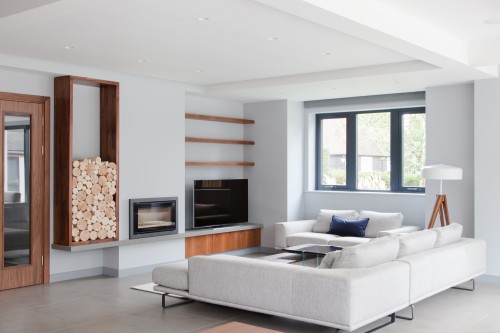Lighting - part 1
24 January 2022 by Simon Drayson
Old browser alert! We have detected you are using a pretty old browser. This website uses cool features that can't be supported by your browser.
If we let you see the website it would look all weird and broken, nobody wants that!
Update your browser!24 January 2022 by Simon Drayson

Last summer, we shared our interior design tips from an architect’s perspective, starting with the Hearth and the Altar, otherwise known as the Lounge and Kitchen respectively. One topic that came up time and again was lighting, as this can make all the difference to our clients. With our larger projects, we tend to work with a lighting designer, for their specialist knowledge, whereas for our smaller ones - more often than not - we design the lighting in-house.
We should probably start off by explaining the difference between functional (or directed) and ambient (or diffused) lighting, as Lounges and Kitchens need a mixture of both to be useful and beautiful. For those of you not already familiar with 19th century designer William Morris’s most famous saying, here it is again: “have nothing in your house that you do not know to be useful or believe to be beautiful”. Words to live by!
As the name suggests, functional lighting serves a purpose for helping you with specific activities around the home. For example, a table lamp on your home office desk, or a floor lamp tucked behind your favourite reading chair. In contrast, ambient lighting is softer, warmer lighting that fills in any gaps between your functional lighting to create the desired atmosphere. Fairy lights are the obvious example, but this can - and should - be designed in from the outset of the architectural design process.

You will need some kind of functional lighting for times when you need to light the whole room (we think that pendants tend to work better than spotlights), and some kind of ambient lighting for those when creating atmosphere is more important (we prefer floor and table lamps on 5-amp circuits – meaning that they can be switched on and off by the door – to wall lights).
Bookshelves are a really good opportunity for adding ambient lighting, either by recessing LED tape into the underside of the shelves (with a diffuser to avoid glare) or choosing a heavy table lamp that doubles as a bookend. Play around with the position of the lights before making any potentially irreversible decisions (such as drilling holes in furniture), as you will want these to show off your books in their best light. The same is true of picture lights and your artwork, not to mention houseplants and other objet d’art.

Whilst spotlights certainly create a good amount of light overall, then can create unwanted shadows on the worktop, if their layout is not considered carefully beforehand. These should always be combined with task lighting, often in the form of LED tape hidden under the wall units. Assuming there will some kind of island unit or table, you might also want to consider pendant lighting, which can create a more intimate atmosphere for dining.
Chances are, your appliances will have integrated lighting, so be sure to choose those with the highest energy efficiency rating to keep your energy bills down. A new energy label was introduced in 2020, which much higher standards than the previous one, which will hopefully make the decision-making process easier.

In our next post, we will be sharing our top tips for lighting bedrooms and bathrooms. Until then, please do not hesitate to get in touch to discuss your next lighting project.